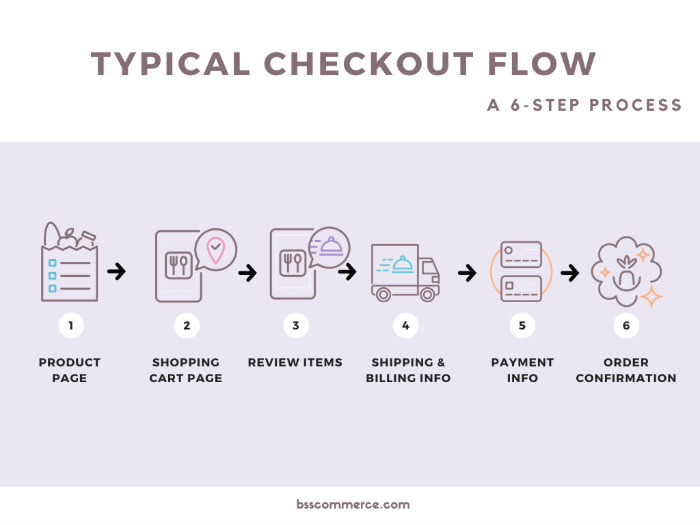In an age where every click could turn into a customer, understanding and implementing effective Conversion Rate Optimization strategies becomes the cornerstone of successful eCommerce. If you’re an eCommerce business owner, digital marketer, or web developer, grasping the nuances of CRO is not just beneficial; it’s imperative to stay competitive and profitable. Whether you’re just starting out or looking to refine your approach, this article is designed to decode the complexities of CRO and provide you with actionable strategies to enhance your online store’s conversion rates.
But what exactly is Conversion Rate Optimization? At its core, CRO is a systematic approach to increasing the percentage of visitors to your website who take a desired action — be that completing a purchase, signing up for a newsletter, or any other goal your site may have. This process involves understanding how users move through your site, what actions they take, and what’s stopping them from completing your goals.
In this comprehensive exploration, we will dive deep into the mechanisms of CRO, from fine-tuning the user experience to optimizing the checkout process — each element critical to building trust and nudging the visitor closer to that ultimate conversion goal. By leveraging up-to-date research, real-world examples, and expert-backed practices, you’ll uncover the secrets to transforming passive browsers into active buyers, ultimately fueling your business growth and enhancing your online presence.
Ready to amplify your sales and outshine your competitors? Let’s get started on this journey to mastering Conversion Rate Optimization for your eCommerce platform!
Understanding Conversion Rate Optimization
Conversion Rate Optimization is the fine art of tweaking your e-commerce operations to convert a higher percentage of visitors into paying customers. At its core, CRO addresses the question: “How can we get more people to take the action we want them to take?” Whether that’s purchasing a product, signing up for a newsletter, or any other key performance indicator for your online business.
Let’s dissect the fundamental metrics that every e-commerce manager, marketer, or owner should monitor to drive successful CRO strategies:
- Conversion Rate: The percentage of visitors who complete a desired action on your site. A low conversion rate might signal a misalignment between customer expectations and what your site delivers.
- Bounce Rate: This metric shows you the percentage of visitors who navigate away from your site after viewing only one page. A high bounce rate could be an indicator of irrelevant content or a poor initial user experience.
- Customer Retention Rates: It’s not just about acquiring new customers, but also keeping them. Retention rates give you insight into how many customers return to make subsequent purchases.
While these metrics provide a snapshot of your site’s health, the dynamic nature of digital commerce requires a deeper, more nuanced approach. For instance, VWO Insights for Conversion Rate Optimization highlights the importance of embracing advanced technologies like generative AI and augmented reality (AR) to stay ahead. These tools can offer personalized experiences that significantly boost conversion rates by enhancing user interaction with the product in a way that feels close to real-life experiences.
Furthermore, the discussion on Expert CRO Strategies for 2024, underscores the importance of being empathetic to customer needs. Engaging with customers through feedback mechanisms and refining your site in response to their expressed needs not only aligns with good customer service but is also a solid strategy to bolster conversion rates.
Incorporating these advanced strategies into your CRO efforts can transform a static online shopping environment into a dynamic and highly responsive ecosystem that anticipates and meets customer needs effectively, ensuring sustained e-commerce growth.
Key Elements Influencing Conversion Rates

Let’s delve into the crucial factors that significantly influence conversion rate optimization in the dynamic world of eCommerce. It’s fascinating how intricate tweaks and insights lead to robust gains in conversions.
User Experience and Site Aesthetics
First things first, user experience can make or break the deal! According to this insightful article on Hotjar, sometimes it could be as simple as changing the colors of your CTA buttons or using larger fonts for main messaging. However, truly understanding what your customers desire, from color schemes to layout structures, delivers remarkable improvements in engagement and, ultimately, conversions.
Navigability and Functionality
Ever stumbled upon a website where finding products felt like solving a Rubik’s cube? Yeah, nobody likes that. Navigability is king, and for a good reason. As suggested by WebFX, simplifying your website’s navigation can empower your visitors to find what they are looking for swiftly, boosting the likelihood of conversion. If visitors can’t glide through your site, chances are they’ll bounce faster than you can say “cart abandonment.”
Mobile Optimization: The Game-Changer
With over 40% of online transactions happening on mobile, as found in various studies including the one on WebFX, not optimizing for mobile is like shutting doors on half of your potential customers. Responsive design, thumb-friendly navigation, and readable font sizes are not just ‘nice-to-haves’ but necessities that could lead to conversion escalations.
Website Speed: The Need for Speed
Time is of the essence, and in the eCommerce game, site speed can either propel your business forward or hold it back. Statistics suggest that even a one-second delay in page load time can result in significant reductions in customer satisfaction, page views, and conversion rates. Fast loading times are non-negotiable if you aim to excel in today’s fast-paced market scenarios.
Understanding that each aspect of your eCommerce site, from UX to functionality, plays a vital role in its success is the first step towards achieving higher conversion rates. Remember, even the smallest modifications can lead to noticeable improvements in how users interact with your site, which directly correlates to improved conversion metrics.
Optimizing the Checkout Process

When it comes to eCommerce, sealing the deal (a.k.a making that sale) hinges on the effectiveness of your checkout process. A cumbersome checkout can sing lullabies so sweet that your buyers nod off before hitting “Purchase.” Let’s trim the fat and make it zippy!
Firstly, registrations are your enemy—at least before a purchase is made. Requiring an account can deter over 25% of customers from completing their transaction. Implement a guest checkout option to keep the flow seamless and unobtrusive. Guests can always convert into registered users post-purchase through a gentle nudge on the thank you page.
Streamlined Simplicity is Key
Reduce friction by minimizing the number of steps in your checkout process. As highlighted by WebFX, it’s advised to keep the flow between three to four steps. Confusion is not a friend we invite to this party!
Payment and Shipping — The Dynamic Duo
A delightful duo of shipped goods at lightning speed and an array of payment options does wonders. Support credit card payments and mobile wallets — these are the heavy hitters in the U.S. eCommerce playground. And hey, throw in some free shipping for orders over a certain amount to sweeten the deal. According to Bazaarvoice, over 50% of customers are more likely to complete a purchase if they know an extra fee isn’t lurking in the shadows of the checkout process.
Transparency is Trendy
Transparent costs and fees remove the element of surprise — and not the good kind. Let your customers see what they’re paying up front and why. Use a cost calculator or a dynamic update of their cart to display real-time figures responsibly.
From Browsing to Buying: Convert with Confidence
Next, use psychological triggers effectively. Scarcity (“Only 5 left!”), urgency (“Sale ends in 1 hour!”), and social proof (e.g., “4.9 stars from 1000+ happy shoppers”) can turn a browser into a buyer. Remember, we’re not tricking them; we are just clear-cut showing the value and rousing the shopper in taking favorable actions.
Finally, validation is more than just for parking; it’s also crucial at checkout. Underlining the security of your website with SSL certificates and visible trust badges assures customers their data is safe. Plus, did you know about 17% of customers would ditch their cart if they didn’t trust the site? Seal their comfort, and they’ll seal the deal.
This is just a slice of the checkout optimization pie. Make sure every part of this process is a walk in the park, not a hurdle race. Your checkout process should be fast, friendly, and most importantly, functional.
Building Customer Trust and Confidence
In the realm of eCommerce, establishing trust is not just an option but a necessity. When it comes to Conversion Rate Optimization, the presence of security badges, compelling reviews, heartfelt testimonials, and clear return policies can dramatically influence customer behavior and purchasing decisions.
Let’s break it down:
Security Badges: Your eCommerce Shield
Firstly, security badges serve as a beacon of safety on your eCommerce site. These icons, whether they represent SSL certificates, PCI compliance, or other security measures, reassure customers that their personal and payment information is protected. Displaying these badges prominently can reduce cart abandonment and boost conversion rates, as shoppers are more likely to complete transactions in a secure environment.
Reviews and Testimonials: Word-of-Mouth in the Digital Age
Next up, customer reviews and testimonials. In an online world, where touch and feel are not options, these elements become the eyes and ears of your prospective customers. According to data, products with positive reviews have a higher chance of being purchased. Reviews provide social proof, an essential component in shaping buyer’s decisions and enhancing your site’s credibility. Making these reviews visible on product pages or even dedicating a section for testimonials can be a game-changer, directly impacting your sales and customer satisfaction levels.
Return Policies: The Safety Net
Finally, a clear and concise return policy provides a safety net for consumers. It communicates confidence in your product quality and reinforces the trustworthiness of your brand. A flexible return policy can be a decisive factor for customers who are on the fence about a purchase. Making this information clear and straightforward, possibly even using bullet points or an FAQ format, can alleviate any apprehensions, leading to a more confident buying decision.
Incorporating these trust-building elements into your eCommerce strategy isn’t just about preventing negatives; it’s about enhancing the overall user experience and facilitating a smoother journey from a browser to a buyer.
Practical Techniques and Tools for CRO
Embarking on the journey of Conversion Rate Optimization in the realm of eCommerce can sometimes feel like trying to solve a Rubik’s Cube—complex and multifaceted. However, with the right set of tools and techniques, deciphering the puzzle of customer behavior becomes manageable and quite exhilarating.
At the heart of effective CRO lies A/B testing, which allows you to compare two versions of a web page to see which one performs better in terms of converting visitors into customers. It sounds simple, but the devil’s in the details. The key to successful A/B testing is not just in choosing what to test—be it headlines, calls to action, or different layouts—but in measuring the impact of these changes accurately.
Another powerful ally in your CRO arsenal is the use of heatmaps, a tool that visually represents where users are clicking, scrolling, and spending time on your site. Tools like Hotjar provide invaluable insights into user behavior, highlighting potential pain points and areas of improvement. Whether it’s a confusing navigation structure or a hidden call to action, heatmaps lay it bare.
When discussing analytics tools, Adobe Analytics and Heap are pivotal in capturing and analyzing intricate user data. Adobe Analytics excels in tracking real-time multichannel data, which helps in viewing user flows and monitoring conversion rates with visually engaging reports. Heap complements this by providing detailed insights about user interactions on your site, including clicks and form submissions, essential metrics for understanding engagement and usability.
Beyond these tools, gathering direct customer feedback is invaluable. Nothing beats hearing directly from your customers. Utilizing feedback tools such as on-site surveys and feedback widgets can provide direct voice-of-the-customer insights. These insights reveal what users admire and despise, enabling further refinement of your eCommerce platform.
CRO is not just about deploying tools or conducting isolated tests; it’s about a sustained commitment to understanding and enhancing the user journey. As noted in the Conversion Rate Optimization Guide by Backlinko, it requires diving deep into customer behavior and preferences. Each insight gathered and adjustment made paves the way for a smoother and more enticing path to conversion.
Remember, the goal is to craft an experience that not only resonates with your prospective customers but also gently guides them towards making a conversion decision, be that a sign-up, a purchase, or another meaningful action pertinent to your eCommerce business.
Case Studies: Successful CRO Examples
Every eCommerce strategy thrives on its ability to evolve and optimize, especially when it comes to conversion rates. Gather around as we dive into a selection of real-world success tales where businesses catapulted their conversion rates through ingenious CRO strategies.
1. The Paradox of Less Is More
In an eye-opening case taken from 9 Surprising CRO Case Studies, a large online store specializing in college textbooks found that stripping down their product pages led to a significant 15.3% spike in conversions. They removed detailed product descriptions and narrowed down buying options, catering exactly to what their target audience—cost-conscious college students—needed. This overhaul proved that understanding customer motivations can be far more beneficial than blindly sticking to traditionally recommended practices.
2. Simplifying for Clarity Boosts Trial Conversions
The journey from a free trial to a paying customer is critical for any SaaS platform. DashThis took on this challenge by streamlining their onboarding process, a move inspired by insights garnered using CRO tools like Hotjar, as highlighted in 10 CRO Case Studies You Can Replicate to Increase Conversions. By clarifying the initial setup steps and reducing design distractions, DashThis saw a 50% increase in trial users converting to paid plans. This case emphasizes the effectiveness of removing barriers to user engagement, particularly during the early stages of user interaction.
3. The Unconventional Route to a 102% Increase
Basecamp’s experimentation with their website design, covered in Invespcro’s insights on CRO, demonstrates a radical yet successful approach. By minimizing social proof and focusing on a cleaner, more focused design, Basecamp achieved a remarkable 102% increase in conversions. This instance serves as a strong argument for sometimes veering away from conventional CRO norms in favor of fresher, tailored strategies.
4. Visual Simplicity Wins
The interface of your eCommerce platform can make or break the customer’s decision to proceed with a purchase. The example of Brookdale Senior, also from Invespcro’s article, echoes this sentiment. When they replaced a complex video with a simple, impactful image on their landing page, conversions improved by 3.92%, despite widespread belief that videos are superior for engagement. This outcome draws attention to the importance of aligning content with the preferences and needs of your specific audience.
These case studies not only narrate success but also underscore a pivotal CRO principle: the value of continuous testing and adaptation. Each story reveals a layer of customer psychology and market dynamics, providing actionable insights for eCommerce practitioners striving to hone their conversion tactics. Their experiences encourage a mix of innovation, testing, and sometimes, a bold step away from the norm to uncover what truly drives conversions in your unique market space.
Seize the Power of CRO for Your eCommerce Success
As we’ve journeyed through the intricate landscape of Conversion Rate Optimization, it’s clear that mastering CRO is not just about tweaking a webpage or redesigning a navigation bar. It’s about fostering a deep, intuitive understanding of your customers’ needs and behaviors, and crafting an eCommerce experience that not only meets but exceeds their expectations. From enhancing the checkout process to implementing advanced analytics and embracing the pivotal role of customer trust, every strategy you employ can significantly influence your conversion rates.
However, the road to CRO mastery doesn’t end here. The digital marketplace is dynamic, and strategies that work today may need adjustment tomorrow. Continual testing, learning, and adapting are key to maintaining a competitive edge in the bustling world of eCommerce. By staying committed to refining your CRO strategies, you ensure your online store remains relevant, responsive, and remarkably successful.
What’s Next in Your CRO Journey?
Do you feel ready to implement these strategies into your eCommerce platform? Which CRO tactic do you think will be the most challenging to execute? Are there any particular areas where you feel stuck, or perhaps, something that excites you about the potential transformations ahead? I encourage you to share your thoughts and engage with this content. Let’s discuss further how you can transform these insights into actionable strategies that catapult your eCommerce business to greater heights.
Remember, Conversion Rate Optimization is not just about adjustment; it’s about evolution. Your eCommerce success depends on nothing less than a deep, committed practice of evolving with your customers’ needs and the technology that serves them. Let’s embrace this journey with optimism and innovation, and watch as your efforts turn into measurable success.
Are you ready to unlock the full potential of your eCommerce platform? Let’s make your digital store not just functional, but phenomenal. Engage with us in the comments below or reach out directly to embark on this transformative journey together.
Embrace the challenge, for the path of CRO is where your future success lies!











